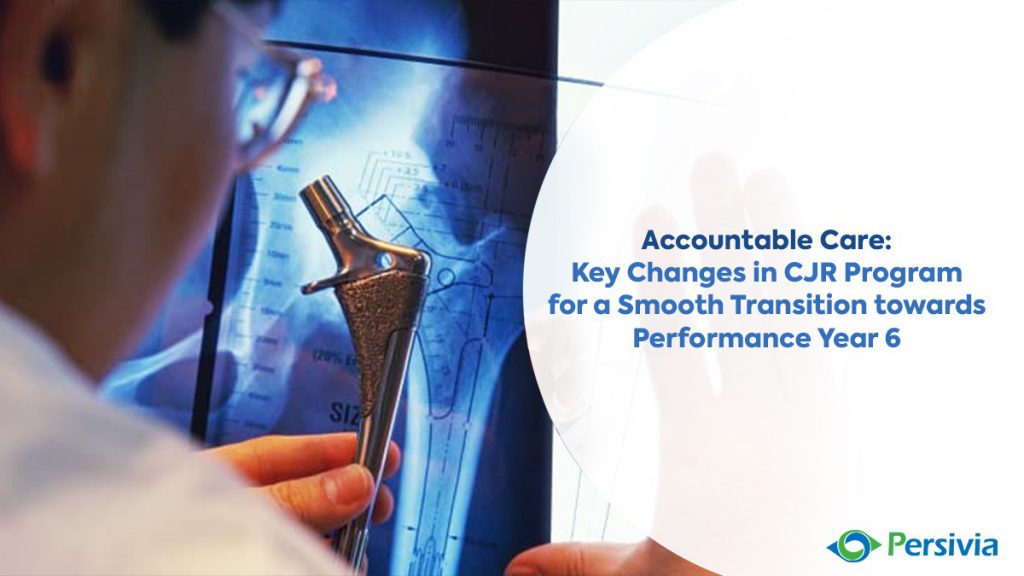Introduced back in 2016, the Comprehensive Care for Joint Replacement CJR program was designed to bundle payments for joint replacement surgeries in acute care hospitals and hold them financially accountable for the episode of care
COVID-19: Something that Caught Everyone off Guard
Initially, the Comprehensive Care for Joint Replacement CJR program was planned to go for 5 years. However, the COVID-19 public health emergency compelled its extension by CMS for another 3 years. This extension will only apply to the hospitals falling in the Metropolitan Statistical Areas (MSAs) that had mandatory participation for this program. For the voluntary participants, it ended at the completion of PY5.
For its continuation, changes have been made to the target price and wage factor calculation, which act as the basic pillars of this program. In order to get a knack of the changes, it is essential to develop an understanding about target price and wage factor.
Target Price: The Performance Benchmark
Target price is defined as the amount allocated by CMS to the hospital for managing an episode of care. It is a benchmark that helps determine the performance. If a healthcare setting exceeds the target price at the completion of an episode of care, it results in a negative Net Payment Reconciliation Amount (NPRA). Resultantly, CMS penalizes that healthcare setting as they have to pay the excess amount to CMS. On the contrary, if a healthcare setting handles an episode of care while staying inside the target price, it results in a positive NPRA. Consequently, the healthcare setting is rewarded as they get to keep the saved amount. Moving into PY6, CMS will use data of the previous fiscal year rather than historical data across an entire region in order to define the target price.
Target price is multiplied with Market Trend Factor, Normalization Factor, and Risk Score. As a result, the standardized target price is obtained.
Standardized Target Price = Target Price * Market Trend Factor * Normalization Factor * Risk Score
Market trend factor and normalization factor are calculated at the time of reconciliation. However, the risk score is obtained in view of three factors that include:
• Age
• Dual Eligibility
• HCC Conditions Count
Wage Factor: Conversion from Standardized Target Price to Actual USD
Once the standardized target price is obtained, it is multiplied with the wage factor in order to convert it to the actual USD amount. Wage factor is calculated using the formula mentioned below:
Wage factor = 0.7 * Wage Index + 0.3
To develop a better understanding, it is important to define wage index.
Wage Index: Labor Portion of the Standardized Amounts
Wage index is the ratio of the region’s average hourly wage to the national average hourly wage. Applied only to the labor portion of the standardized amounts, wage index acts as an adjustment factor in the wage factor calculation. Like the target price, data across a region rather than each individual hospital is used by CMS in order to determine wage index.
What Induced the Need to Tweak Calculation Mechanism?
Till PY3, CMS calculated the target price using historical data for each hospital. This changed in PY4 as CMS started using historical data across an entire region for target price calculation. However, it mitigated concerns of CMS regarding low volume.
Moving into PY6, CMS has planned to use data of the previous fiscal year in order to set the target price across a region. In order to address any discrepancies, FY2020 will be excluded due to the COVID-19 public health emergency. Therefore, target price for 2021 was set keeping in view the data for FY2019. Similarly, the calculations for 2022 will be based on the data for FY2021.
In addition, the Total Knee Arthroplasty (TKA) and Total Hip Arthroplasty (THA) procedures needed to be performed in an inpatient setting for a CJR episode to be triggered. These procedures have been removed from the inpatient-only list and will now trigger a CJR episode of care whether performed in an inpatient or outpatient setting.
Furthermore, changes have been made to the discount factor which is determined based on the quality score of a healthcare setting and then subtracted from the target price to obtain shared savings. These changes encourage the achievement of higher quality scores as they lead to favorable outcomes for the healthcare setting.
Quality Score: The Decisive Factor
As we move towards the PY6 of the CJR program, quality score is going to be the core to reap maximum benefits from this program. Contact us for a demo today in order to capitalize on this opportunity.
Table of Contents
